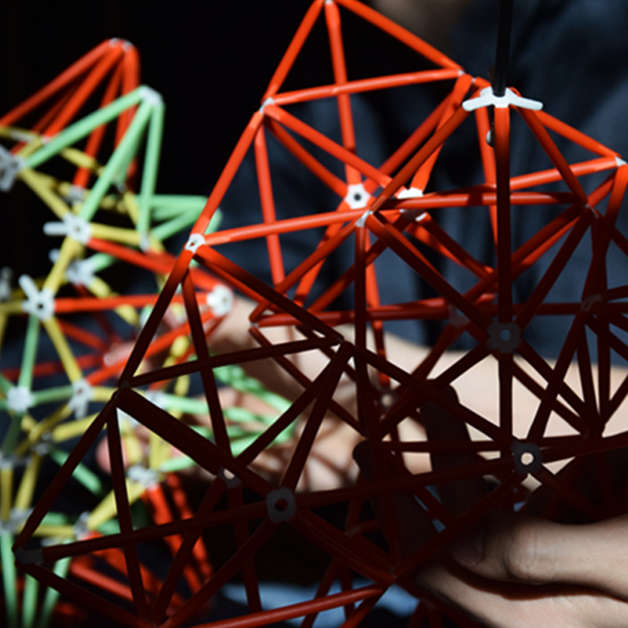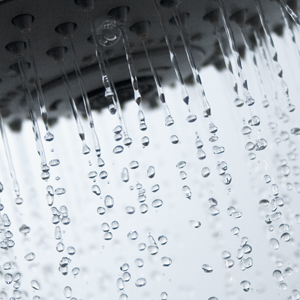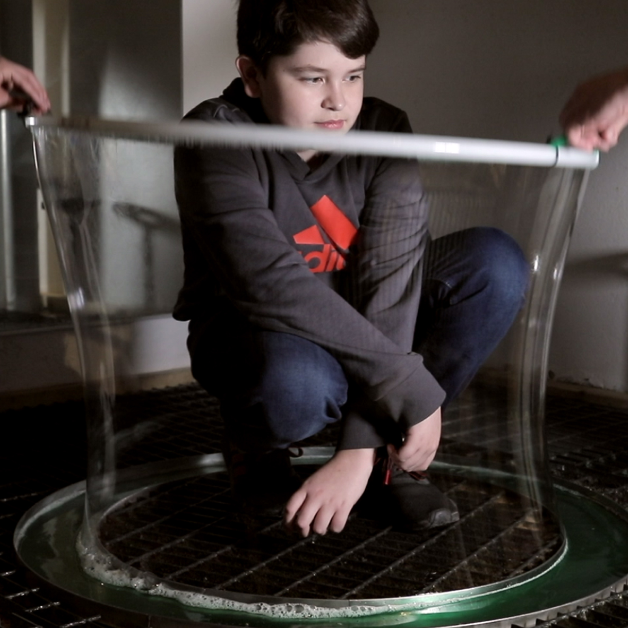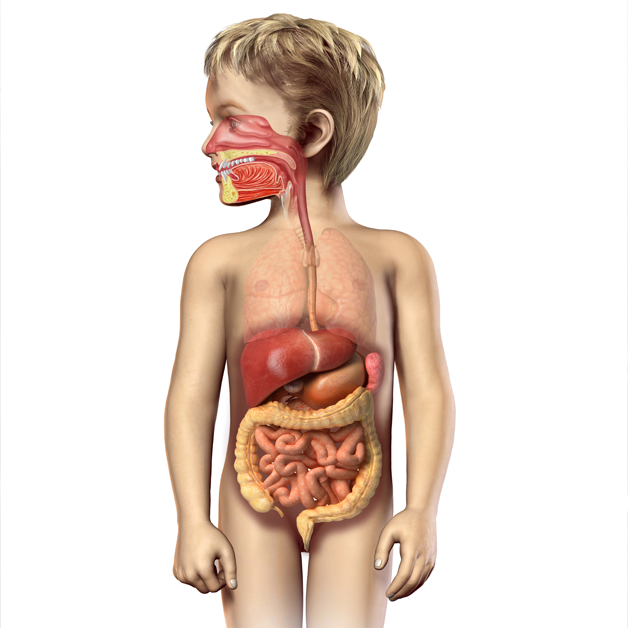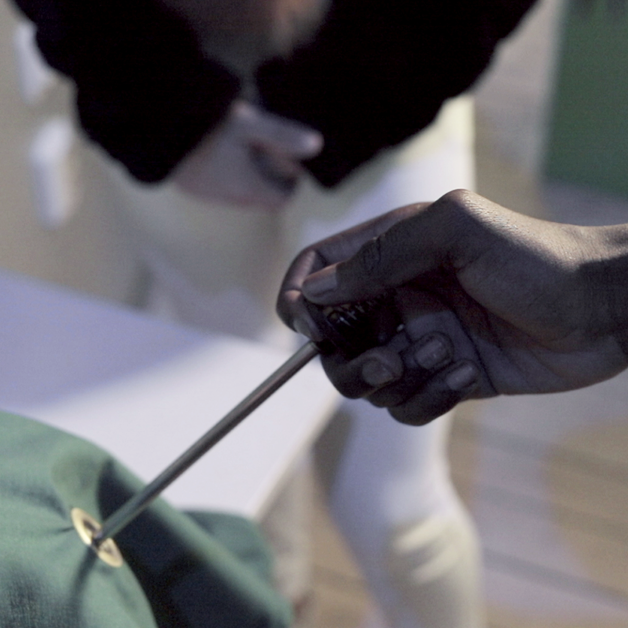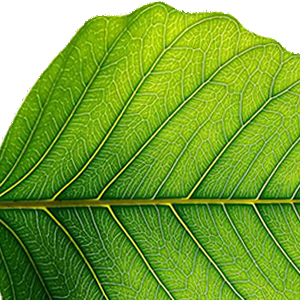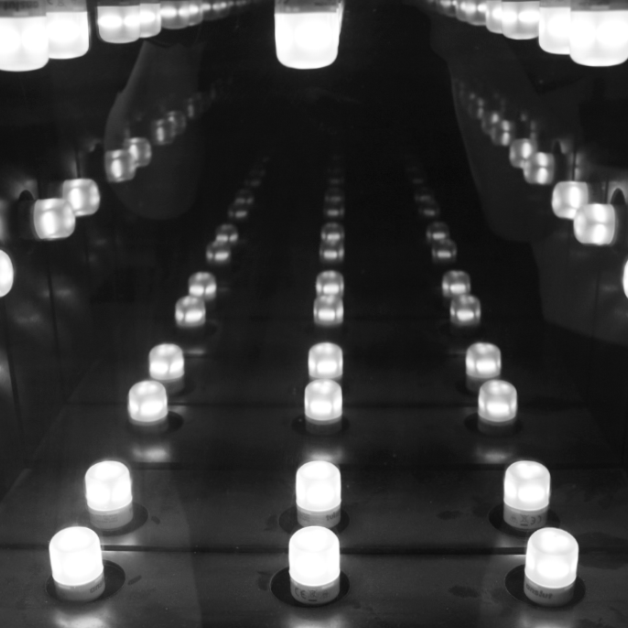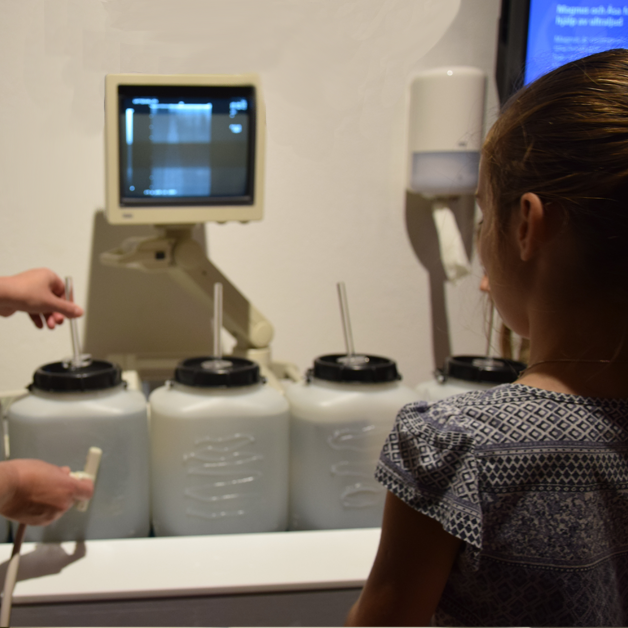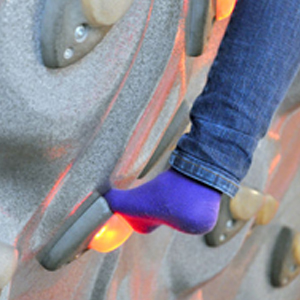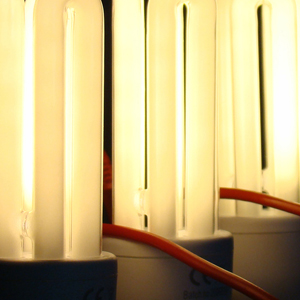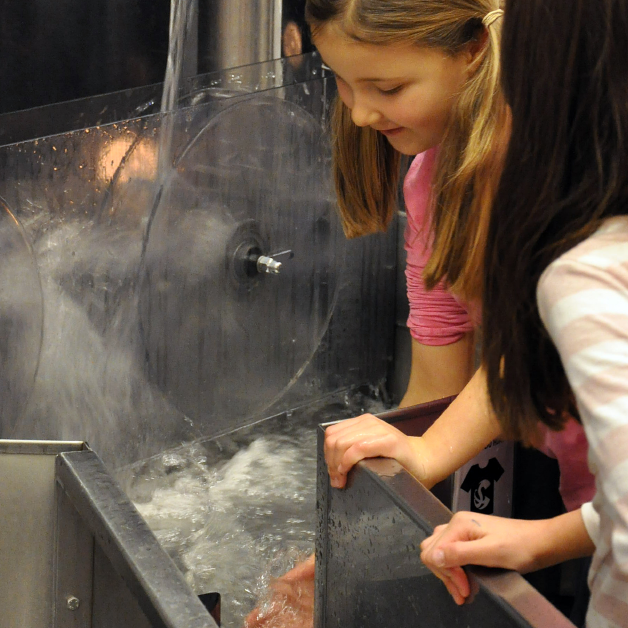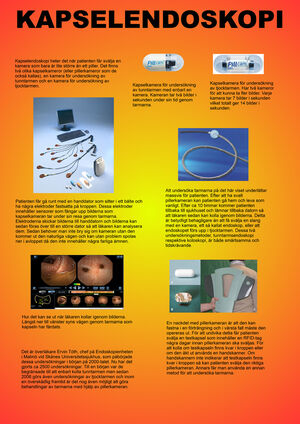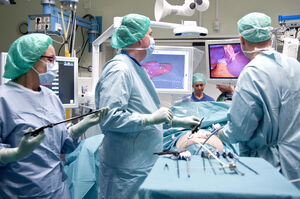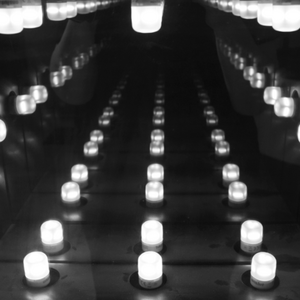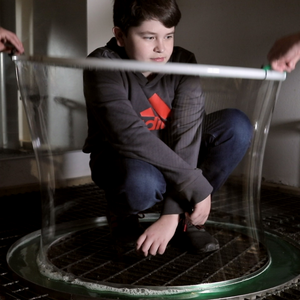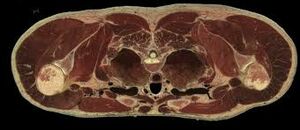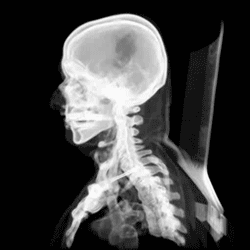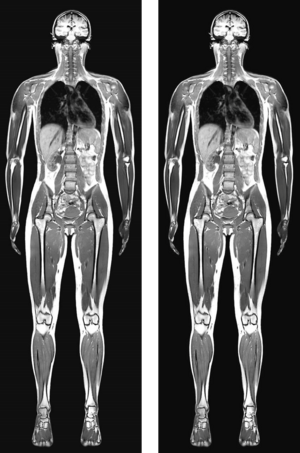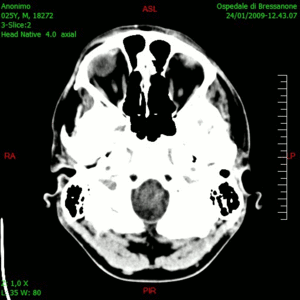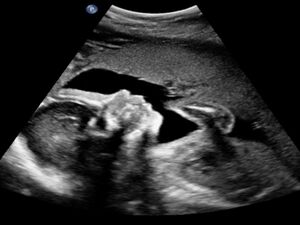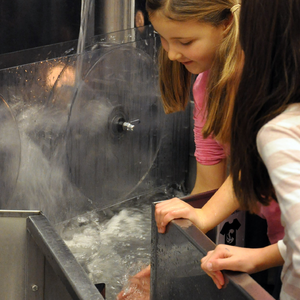Experiments
4D Frame
Technology, mathematics, and creativity
4DFrame is a creative educational tool that can combine and connect the most basic units of all figures to comprise frames and thereby gradually build various polyhedrons and unlimited creative pieces. In Vattenhallen you can build a bridge, an aircraft, and many other models, using the building material 4DFrame. In our shop you can buy a model to bring home and continue to be creative.
![]()
Enlightening Imagination is a nationell and internationell competition (new tab) to inspire students to solve problems and use their creativity with the help of the material 4DFrame. During spring term local competitions take place around Sweden. The winners from Sweden will then compete in an International Mathematical and Science Creativity Competition in Seoul South Korea.
Follow the link above to see what other student has created in this competition.
4DFrame was developed in South Korea. The name comes from "4D" (four dimensions) and "frame" or structure. In mathematics the four dimensions are length, width, hight and time. Read more about 4DFrame on their homepage (new tab)
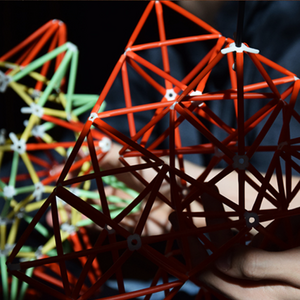
Capsule endoscopy
With the help of a swallowable camera, you can see how the stomach and intestines look inside.
Capsule endoscopy is when a patient is allowed to swallow a camera, which is only slightly larger than a pill. With the help of a PDA that sits in a belt and some electrodes attached to the body, sensors capture images that the capsule camera takes during its journey through the intestines. The electrodes send the images to the PDA and the images can then be transferred to a larger computer so that the doctor can analyze them.
Article:
- Travel trough the digestive system - follow the capsule camera from the mouth to the rectum.
Capsule endoscopy (pdf 71 kB, new tab, in Swedish).
Poster text in English.
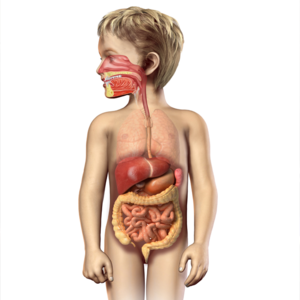
The Climate Chamber
Cubik Meter
Note! Staff must manage this experiment.
Instructions:
- Have a person sit in the climate chamber - 5 minutes.
- Watch the screen, what happens to temperature, humidity and carbon dioxide.
- Is there any difference if the person is still or moving around.
- To measure the effect of the body, read how much carbon dioxide you have been breathing out during the 5 minutes you sat in the box and then go into the chart on the back to read the effect. If you sat more or less than 5 minutes, calculate how much carbon dioxide it would have been in 5 minutes.
Fun facts:
When our body break down glucose, it creates heat. In order not to increase our body temperature, we emit water vapour by sweating and breathing out. The air around us is also warmed up.
People and other animals eat food to get energy. The energy is released during the cell respiration when the oxygen burns the carbohydrates while carbon dioxide and water are formed.
The energy comes from the beginning from the sun. Plants capture the energy in sunlight in photosynthesis. The energy is then used to carry on the chemical reactions where carbohydrates are formed.
The experiment was sponsored by Zenit teaching materials.

DigiWall
Instructions:
- Choose a language – instructions are in English and Swedish. Other languages can also be selected.
- Choose a programme – for example “Falling egg” and get ready!
- Divide the activities between the pupils, so everyone can have a go or organise a tournament.
Fun facts:
The world’s tallest interactive climbing wall – 37 metres high – is in Groningen in the Netherlands.
Try a game on the Digiwall homepage.
Dry Shower
Listen to the sound of white noise
Take a dry shower
Instructions:
- Open the red and blue taps – one at a time. Listen!
- Then open both taps equally – listen and compare!
Fun facts:
In an ordinary shower, the noise is generated when water is forced through the holes in the shower head. Here, we are using a noise generator to produce the sound.
The noise is white at the start, all frequencies are present and equally strong. Behind the taps in our shower are filters, which affect sound, so sound from the red tap lacks the high frequencies and from the blue tap it lacks the low frequencies.
Noise has considerable technical importance. Sometimes, noise creates difficulties, for example when we talk to each other in a crowded environment. Noise, however, can also be used to improve measurements, such as in highly accurate digital measurements where noise is added to increase precision.
The experiment has been developed by the Department of Electrical and Information Technology, Faculty of Engineering LTH, Lund University.
Laparoscopic surgery
Instructions:
- Grab hold of the surgical instruments.
- Look at the screen and try to do the surgery, without peeking under the drape.
Fun facts:
The equipment for carrying out keyhole surgery consists of a camera with its own lighting and surgical instruments.
The advantage of keyhole surgery is that the body heals a lot faster, since several small incisions are made instead of one large one, as in the case of an open operation.
Mirrors
Infinity mirrors
The reflection is thrown back and forward - an infinite numer of times!
In Vattenhallen, you will find more mirror experiments.
Instructions:
- Stand by the side of the mirror.
- Hold your hand in the reflection.
- Count how many times you can see your hand!
Perfect Reflector
The light between the mirrors is infinitely reflected many times!
Instructions:
- Look at your face in the corner mirror.
- Try moving sideways.
The rays of light would have been reflected in other directions, no ray would have come back – the corner would not have been visible! A technique that can be used if you don’t want to be discovered – stealth technology!
Pedal Power
Pedal to turn on the light and sound
Energy = Power x Time
Instructions:
- Sit on the bicycle.
- Start pedalling and keep an eye on the voltmeter – pedal max 230 Volt.
- Try out different lamps and turn the music on!
Fun facts:
Power is measured in watts (W). 1 W is 1 joule per second. A joule (J) is a relatively small amount of energy and larger amounts of energy are measured in kilowatt-hours (kWh), or 1000 watts per hour.
The power you obtain when you use our pedal power station is approximately 450W for light bulbs and 20W for low-energy lamps.
If you pedal for 2 hours, you have converted energy equivalent to 1 kilowatt-hour, 1 kWh. 1kWh contains the same energy as it takes to shower for 2.5 minutes, use a hot plate for 30 minutes, play video-games for 31 hours or watch TV for 10 hours/plasma TV for 4 hours/LCD TV for 3.5 hours.
The experiment is developed by the Department of Measurement Technology and Industrial Electrical Engineering (MIE). In January 2014 the new name of the department is the Department of Biomedical Engineering (BMT), Faculty of Engineering, Lund University.
The Soap Bubble Molecule
Make a giant soap bubble!
Instructions:
- Stand on the grating – in the middle of the ring.
- Lift up the hula-hoop!
- Sometimes it’s easier if you help eachother.
Fun facts:
Soap molecules are a few nanometres long (= millionths of a millimetre) and the film of water is a few micrometres thick (= millionths of a metre).
Some soap molecules like water, (hydrophilic), whereas others do not like water, (hydrophobic).
When you blow a soap bubble, the soap molecules spread out on surface and any extra molecules in the water layer “repair” cracks that appear, so that the soap bubble can get bigger.
The experiment is developed by the Department of Chemistry, Faculty of Engineering LTH, Lund University.
Tomography
Instructions:
- Set your approximate length.
- Select MR (MRI), CT or Fryssnitt (Frozen section).
- Lie on the bed.
- Move the level back and forward to move through the tomograph.
- Look at the screen to see how your body looks inside.
Fun facts:
Tomography is a way of obtaining images of the human body in cross-section. By sending a type of wave or radiation through the body from many different angles, a computer can calculate what the cross-section looks like. Various methods provide different information about the body.
Magnetic scanner
MRI (magnetic resonance imaging) uses strong magnetic fields and radio waves which affect the hydrogen atoms of all the water present in the body. An MR image shows how much water is present in each organ. Dark areas contain little water (e.g. bone) whereas lighter areas contain a lot of water (e.g. blood).
Research
In 1982, Scandinavia’s first MRI scanner was built in Lund. Now, more than 30 years later, research is underway into how MRI technology can be used to measure and describe functional processes in the human body, such as the blood supply to various organs.
Computed tomography
CT scans (computed tomography) use x-rays. X-rays are slowed by electrons. The denser the material, the more electrons it has. A CT image reveals the density in each organ. Dark areas have low density (e.g. blood) whereas light areas have high density (e.g. bone).
Picture 1: Frozen section from a human.
Picture 2: CT scan converted into a 3D animation in Photoshop. Human head. Arielinson, Wikipedia.
Picture 3: Transverse section from computed tomography of the upper part of the skull. Air is depicted as black, bone as white and the greyscale areas correspond to the brain and other soft tissue. A brain tumour is visible as a darker area in the upper righthand part of the image, which corresponds to the frontal left hemisphere of the patient’s brain. Luca Lorenzi, Wikipedia.
Ultrasound
Guess what's in the containers!
Instructions:
- Put some gel on each container.
- Put the ultrasonic sensor horizontally to the container.
- Pull the stick up and down, turn it slowly. Try to get the object that sits on the stick in level with the sensor.
- Do you see what the object is? Unscrew the lid and look.
Fun facts:
Ultrasound is sound with a frequency so high that we cannot hear it. Humans can hear sound between 20 and 20 000 Hz. Diagnostic ultrasound uses frequencies around 5 000 000 Hz. Diagnostic ultrasound is used to examine soft organs such as the kidneys, liver and heart. Many people are familiar with ultrasound technology from antenatal check-ups, where it is used to examine the foetus.
Creating an image: powerful, short ultrasonic pulses are emitted along several lines from the sensor. If the sonic pulse is reflected against a material, the machine measures how long it takes for the echo to return to the sensor. Since we know how fast sound travels in the body (1540 m/s), the machine can calculate where the reflection took place and draw a white dot at the appropriate location in the image. All the white dots in an ultrasound image correspond to an echo signal.
Waterpower Plant
Instructions:
- Use the black blocks in the water to make as many LEDs as possible light up.
- The turbine on the right lights up the LEDs to the right, and the left on the left.
Fun facts:
A waterpower plant uses the river’s elevation and the energy of the falling water to generate electricity. The falling water passes through a turbine and causes it to spin. The turbine is connected to a generator, which generates the electricity.
The waterpower plan is invented and built by Lars Hedenstjerna, Vattenhallen Science Center, sponsored by Kraftringen (former Lunds Energi).

